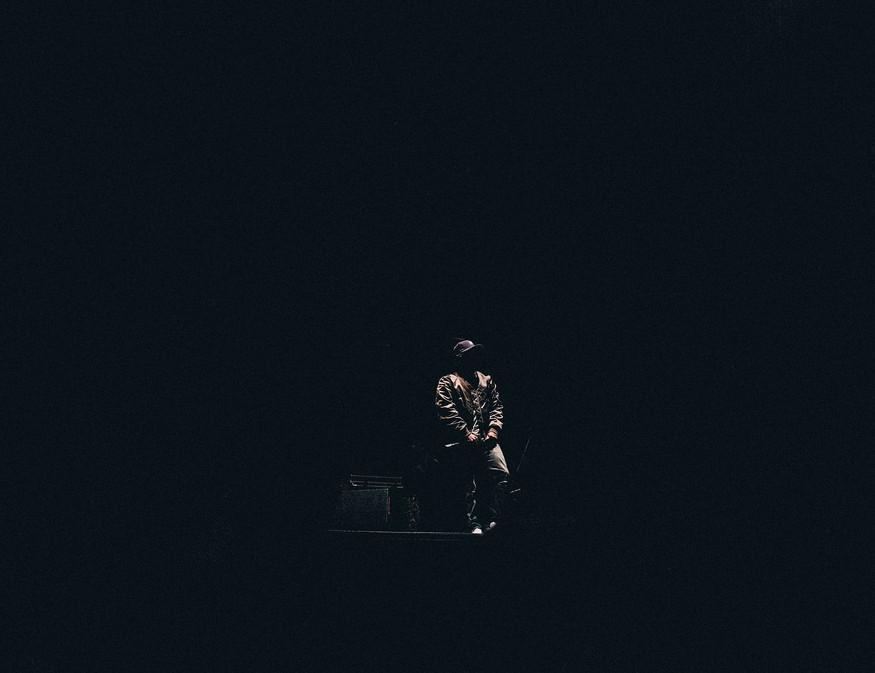Something special happened to me four years ago at the 9:30 Club in D.C, slam in the middle of the awful August 2011 heat wave in a room full of sweated-out shirts. A concert with some friends, one of those summer internship thrills that becomes all you remember after the coffee-making and dry cleaning delivery skills fade. The man we had come to see was a newcomer, and while the show was unsure of itself and lacked the gloss of a Watch the Throne, there was a moment when we knew. Throughout an hour (and possibly every single song in the artist’s three-tape career), that tight room of folks gritted through the heat while basking the glow of the most rare of events: we had witnessed the birth of a star.
It’s only been four years, but four years in Kendrick Lamar’s time might as well be a decade, especially when compared to the careers of those considered his closest chronological peers, Drake and J. Cole. All three have advanced musically, and while Drake has hyper-accelerated his marketing machine and J. Cole has finessed a homegrown sense of genuine goodwill into a dedicated following, Lamar has taken Coltranian giant steps in each of the domains of music, message, and persona. Nowhere was that more evident than in Lamar’s concert last week at the Kennedy Center in D.C. with the National Symphony Orchestra.
Symphony pops turns aren’t all that uncommon now, especially in the current genre-melting landscape. But for hip-hop they are still uncommon enough to signify powerful moments in the art’s history. Nas’s concert last year in the same space with the same orchestra to commemorate the 20th anniversary of Illmatic was a landmark, and it is significant that Lamar was the next act up. The blend of lyrical prowess, instrumentation, and social commentary on Lamar’s recent To Pimp a Butterfly evoked more than a few Illmatic comparisons, and Lamar delivered on those comparisons in the Kennedy Center by giving perhaps the best concert of his career.
The Kennedy Center concert showcased an artist at the peak of his powers as one of the best showmen in the art right now. When comparing the concerts that bookend my experience as a listener, it is clear that this is a product of will and work. 2011 Lamar was more timid, a wooden man with a small stature and a squeaking voice who drummed up just enough charisma to turn mellow songs into compelling concert hall rap-alongs. 2015 Lamar is bold, flashing a range of brashness, gravitas, played-up humility, and self-assured confidence that would be enough to fill a room itself. Sometimes, he is kinetic à la Kanye West, jumping in and out of a world of his own hype. Sometimes, he affects timidity again, and a glimpse of that same wide-eyed youth returns. He is a master of the moment, displaying a total control over the crowd and orchestra, willing both to complete silence with single commands.
There was “These Walls,” in which a midtempo R&B-styled two-stepper was gradually remodeled as an operatic showstopper. The soaring strings under his vocals served to further juxtapose the true menace of the song’s hidden message with its instrumentation. The drunken mess of “u” turned into an orchestral drunken mess, something truly spectacular to behold. The second-best performance of the night came during “The Blacker the Berry,” where the violent crescendo at the end of the song is granted a wall of forceful sound and the accompanying comedown made more soothing. And then there was the finale “Alright,” which swelled to the highest heights of hype with added fanfare and triumph from the orchestra. In the middle of it all was Lamar, dressed like a choir boy and conducting the crowd with the same command as the conductor behind him.
There was definitely a risk involved here. Usually, mixing highbrow-leaning music and hip-hop carelessly smacks of a bit of cultural condescension, of a “respected” musical institution lending legitimacy to the musical ghetto. That, or the same collection of songs with a couple of strings thrown on. It takes dedication, teamwork, smarts, a command of diverse crowds, and a good ear to truly transform and blend the two styles as seamlessly as Lamar and NSO Pops conductor Steven Reineke managed to accomplish.
Rewinding back just four years, it would have been impossible to project these heights for Kendrick Lamar. Few artists have ever honed their craft as swiftly and as well as he has. Part of that ascent has been the fact that he seeks perfection and seems to be actively engaged with fans’ opinions. His bouts with Black activists have yielded a political message that becomes more and more honed and sharpened. These developments all came through on stage at the Kennedy Center.
Lamar played well on the special resonance of his songs about blackness in an enclave of the majority, which became the true transformative spirit of the show. I felt something special at yelling “Alls my life I had to fight, nigga!” in front of the orchestra that played for FDR’s inauguration. I imagine Lamar did as well. The climate inside the theater, with people of all races, with Girbauds and even a couple kente cloth robes mixed in the cocktail dresses and tuxedos, was itself a conversation about race, with Lamar’s music and performance as the cue cards. In the end, singing along to what has become the de facto Negro spiritual for Black Lives Matter, I felt like a long-awaited and expected guest of the Kennedy Center, rather than an out-of-place interloper. This is what music aspires to be.

